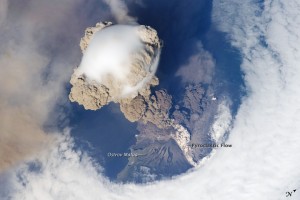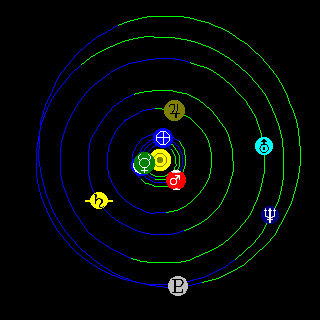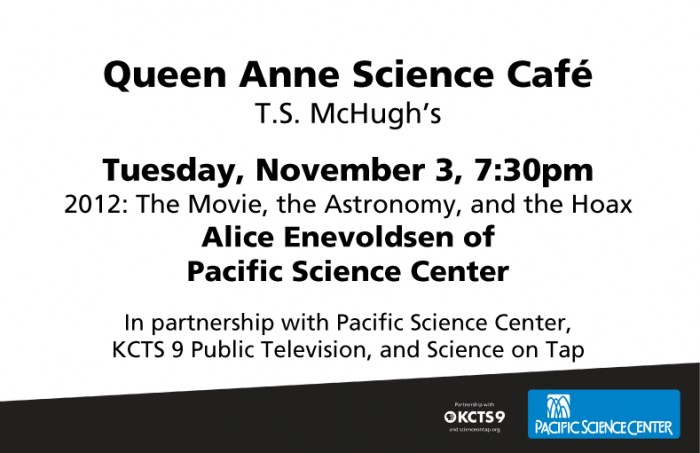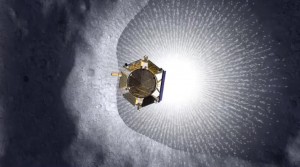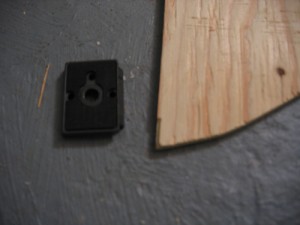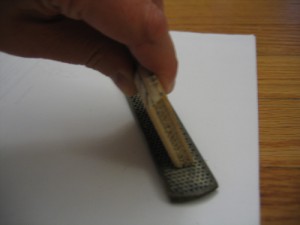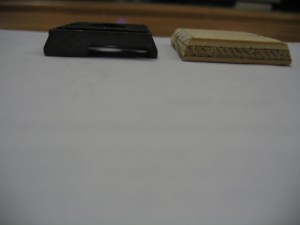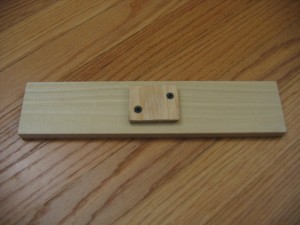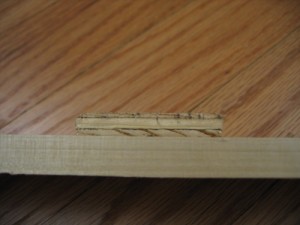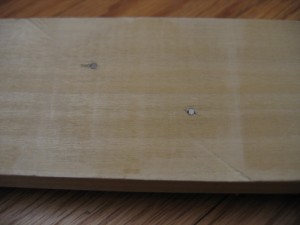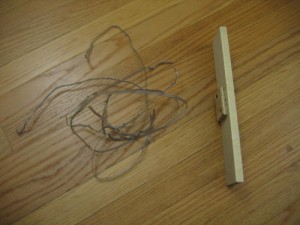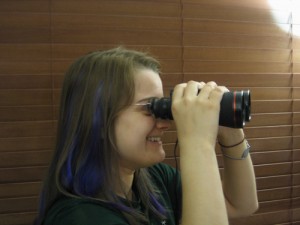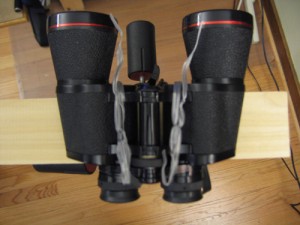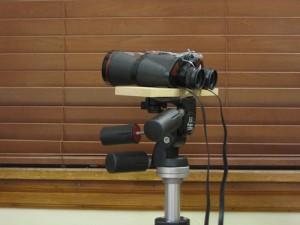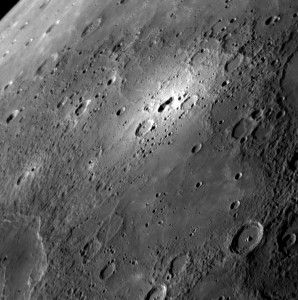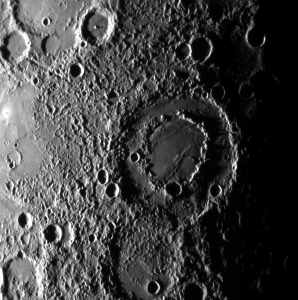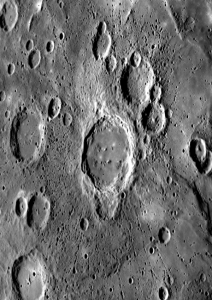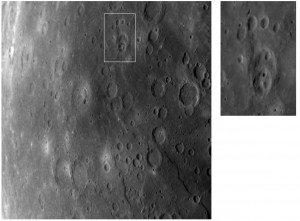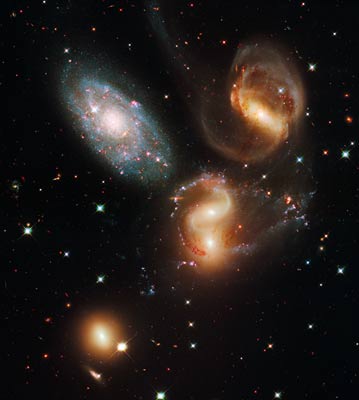Archive for the ‘AstroInfo Article’ Category
 2012 – The (2009) Movie
2012 – The (2009) Movie
Um. Um. Um. Um. Where do I begin?
The movie was entirely preposterous. There almost wasn’t enough science to make fun of! It ranks way above Sunshine in my ranking of action flicks full of terrible science, and yet it barely holds a candle to Armageddon. Perhaps no one can top Armageddon as the best movie to show an intro Astronomy class: the best movie to ask Astronomy students to rip to shreds.
I think we (the astronomy educators of the world) were worried about nothing. If this movie convinces anyone that the 2012 hoax is real, then they weren’t watching the movie.
In any case, here goes!
======SPOILER ALERT 4======
.
.
.
.
.
.
======SPOILER ALERT 3======
.
.
.
.
.
.
======SPOILER ALERT 2======
.
.
.
.
.
.
======SPOILER ALERT 1======
NO REALLY! STOP READING NOW!
Science: F (A=perfect, F=utter failure)
Blood & Guts: 1-2 (0=none, 5=District 9 & Zombie movies)
Illness & Medical Awfulness: 0 (0=none, 5=Outbreak & District 9)
Scariness: 2, mostly just suspense (0=none, 5=I’ve never seen a “5” but Outbreak gave me nightmares for years – so maybe 5 is Jaws or Psycho)
Other Phobias*: “apocalysophobia”, suggestion of vertigo, aviophobia, hydrophobia, necrophobia (fear of losing spouses or children and fear of death), amaxophobia, fear of conspiracy, and fear of flying giraffes.
Opening Scene:
I can’t even tell what planets those are supposed to be they’re so wrong. At first I thought it was Nibiru on a collision course with Earth and the Moon, but since there is no further mention of Nibiru I doubt that’s right. And then there’s Saturn with a stripy-like-a-gas-giant moon. Uh-huh. No, Saturn’s moons don’t have gas bands like Jupiter.
And the scale is ALL WRONG on the clip of the Earth and the Moon and the giant coronal mass ejection coming off the Sun. Of course, you couldn’t fit all three in a dramatic image even if you wanted (the Sun would wash out the whole image, and to get the sizes anything like that you’d have to be on the other side of the Moon, not the other side of the Sun) to so maybe we can pretend it is a split-screen shot. Mm-hmm.
Solar Eruption:
YES! Okay, they got one thing right. They do not call the giant bubble of Sun-stuff headed towards Earth a solar flare as would be tempting. They call it a solar eruption. Technically I’d call it a coronal mass ejection (CME), but solar eruption is at least not reinforcing a common misuse of a scientific term.
Neutrinos:
This is the crux of the whole movie. It’s also the science-y-est the movie tries to get. (And then later they kill off the astrophysicist who gives this explanation – just as well, this science was, what’s that word again? Oh yes, preposterous!)
Neutrino detector – great, it is deep underground, and it’s got those detectors on the wall to make it look like Super-Kamiokande, but the people climb down inside and the detectors aren’t even in a place where they can detect Cherenkov radiation within the water. The water is through a hatch! And the mine is in India – 11,000 ft deep. Super-K is only 3,250 feet deep. It looks to me like our deepest mines are actually around that deep – but they’re in Africa not India.
Some quick look-ups online reveal at least one 2008 paper from Super-Kamiokande (published in the peer-reviewed Physical Review) that shows no correlation between sunspot number (a measure of solar activity) and neutrino levels. It also does not find a doubling of the number of neutrinos detected during Solar Maximum. Of course, this being the cause of the apocalypse in the movie, maybe we should just let them have doubled neutrinos.
Except that wouldn’t cause the apocalypse – as they say in the movie neutrinos do not interact with ordinary matter! This is why we have to have super-specialized detectors deep underground to even detect a few of them. So they have to turn the neutrinos into microwaves. Well, what can I say to that? If you’re just going to turn gnats into electricity or elephants into ocean waves I guess you can do anything.
Then those microwaves begin to boil the Earth’s core. Oh.
Mass Suicide:
This is what I actually worry about. If too many people believe the 2012 hoax, then there will no doubt be a number who take drastic action. Please don’t. You will wake up just fine on December 22, 2012, unless you do something to change that. Suicide is not a good option, neither is anything that hurts you or those around you. If you feel like hurting yourself is a good idea please go talk to your doctor or call your local helpline.
Maya Prophecy:
The “Maya Prophecy” says nothing about the Sun. The calendar flips over. Ta-da!
Geology:
It confuses me how the cracks run down the middles of streets – turning corners with the street. They worm out of the geology by saying the earthquakes and cracks aren’t due to tectonic shift. It also confuses me that these cracks propagate slowly (at about a walking pace), and that they cut buildings like cake: leaving most of the structure intact.
Soil Liquifaction:
This is a real geology term. It generally requires that the ground be saturated with water and then that an earthquake occurs. It does not mean that the soil turns to water, that rocks melt, or anything like that.
Yellowstone:
Yellowstone is the caldera of a hot spot (not “hot zone”) in our Earth’s crust, and could do some interesting things someday. I’d sure stay away from all volcanic areas (yes, that includes Yellowstone) if the Earth’s core/mantle were heating up. Under the circumstances of the movie, Yellowstone would definitely be unstable.
I like some of the beginning stuff that goes wrong in Yellowstone – the lake drying up (though the dead buffalo is really weird and reminiscent of Close Encounters of the 3rd Kind. I don’ t know why it is dead, it certainly isn’t because of the neutrinos.)
Then there’s something about 2700 degrees C and 0.5% change per hour. Math senses tingling – but I didn’t quite catch everything in this sentence so I can’t actually double-check this.
Later on, the way Yellowstone rolls and explodes into flaming balls of lava is cinematography, but how else would you have John Cusack outrunning boulder-sized “meteors” of flaming rock and a rolling ashcloud first in an RV and then on foot? I mean come on! A movie like this needs a man outrunning flaming balls of rock.
Pickles:
Why?
Charlie Frost’s Explanation of the Apocalypse:
No. And you should be able to tell that from his character and his animations.
Mayan expiration date: yeah, but just flip your calendar and you’re okay again.
Alignment of all the planets with the Sun and the galactic center: No. No. No. There is no alignment of the planets in 2012. The alignment of the Sun with the galactic center either happens every year near the solstice or will happen in 2300 depending on how exact you want to be. Does this happen every 640,000 years? It takes us 220 million years to go around the galaxy once, and we go through the plane an unknown number of times during that period.
Neutrinos: we already talked about this.
Earth’s core melts: a good part of it already is melted!
Earth crust displacement theory: There was a guy who proposed Earth Crust Displacement – a massive simultaneous rotation of the Earth’s crust, and Einstein did write a forward to one of his books. It is very important to note that this was in the 1950s – and the currently accepted theory of plate tectonics was not solidified and accepted until the 1960s. My geology professors were not taught plate tectonics when they were in intro geology classes, and now even elementary schoolers can explain it. Einstein was very smart, but he did get things wrong, and scientific theories change as we get more evidence that supports or disproves them. When scientists don’t understand something they propose many possible solutions and then gather data – this helps them choose the theory that is best supported by the evidence.
10.9 on the Richter Scale
Personally, I like the Mercalli scale much better when reporting how “bad” and Earthquake was. It isn’t as useful for a scientific study, but in this case San Francisco would have undergone a “12 – Catastrophic – No structures left standing, landscape distorted” which is easy to understand: total chaos. But 10.9 on a logarithmic scale? What does that even mean? (Let me clarify: I have no gut understanding of 10.9 – but it does have scientific meaning.)
“The San Andreas Fault is shifting …” (says Adrian)
Why would the San Andreas Fault (and all connected faults) be shifting if the earthquakes aren’t due to tectonic shift? Script continuity please!
San Francisco slides into the Ocean
If we’re really having non-tectonic Earth crust displacement due to melting of the subterranean crust and core – and a piece of a continent starts to submerge, shouldn’t it be submerging in the mantle? Why does it look like it is just plain sliding into the ocean? I’m not sure the ocean just off San Francisco is deep enough to slide an entire city into. We’re still on the continental shelf at that point, and you’ve turned the city on end to sink it.
Yellowstone Eruption:
I already said it’s preposterous, so let’s look at just a couple pieces. First, it looks like a nuclear bomb blast surrounded by three rings of clouds, probably meant to be shock waves.
Look at this (this is real, it’s from the International Space Station in June 2009):
That looks kinda similar – but scientists aren’t proposing that the smooth white cloud is a shock wave, just a cloud generated by changing pressures. Maybe that’s what the makers of 2012 were attempting to portray – a volcanic plume so huge it passes through three different layers of air creating three different concentric clouds.
And yes, you should get away from erupting volcanoes because of ash clouds, superheated ash/rock flows, and worst of all – lahars (superhot, superfast mud flows). Not sure where the lahars would go from Yellowstone, but the best advice in volcano country is to stay out of riverbeds and get to high ground – high ground away from the volcano. These various flows can travel up to at least 300 miles per hour – poor John Cusack he should be so dead.
That ash cloud from Yellowstone reaches DC in just about 7 hours. That sounds okay, it’ll be picked up by the prevailing winds and it only takes a plane 5 hours to cross the country. Of course, it will be somewhat dispersed by then and won’t look like the rolling superheated cloud of the apocalypse so much, but depending on how much of Yellowstone you blew up it could make a decent ash layer over most of the country. There really wouldn’t be that much heading towards the West Coast though, the winds will push it back the other way.
Cell Phones:
Seriously folks, you’re destroying the world, dumping entire cities into the sea, blowing up continents, and yet somehow, miraculously your cell towers are undamaged and you have signal everywhere? Cell phones are NOT satellite phones, they rely on cell towers. Cell towers are anchored to the ground.
Planes Taking Off, Runways Eroding
Almost every time we see a plane take off, the runway crumbles away beneath it, and the plane goes off the end into a chasm, because it hasn’t reached take-off velocity yet, only to see that plane plummet a few stories, gain control and pull up out of the brand new canyon. This is okay – planes are made to fly – that’s what a wing is for. Engines just give you speed. If you’re already airborne, and you’ve got a good pilot, you can glide the plane until you get your engines under control. And if you need more speed, what better way to get it than going down? Gravity-assisted take-off, I say!
Geomagnetic Reversal
So we end up with the South pole somewhere in Wisconsin. The mechanism is all off, the timeframe is unpredictable, but yeah, the magnetic poles reverse every now and then – every few hundred thousand to few million years. This should not be related to Earth Crust Displacement theory or 2012.
The Physics of Driving a Car out of the Cargo Bay of a Crashing Airplane
I would like to analyze this in more detail. Suffice it to say for now – I think the car should be moving in the same direction as the plane when the car’s wheels touch the snow. If anyone wants to crank out some math and force diagrams on this with me, that’d be great, I don’t have time at the moment.
Boarding the Ark
Two warnings. 1) You’ve got 20 minutes of Titanic to sit through here, but you’re almost done. 2) The drowning scene is not nearly as realistic as the one in the recent Bond flick: Casino Royale. You can probably handle it.
On Board
Now we have mountain-high tsunamis, and our cell phones STILL WORK.
There’s this fascinating thing that is about to happen – with the pretty “v”-shaped cleft that the arks are positioned at the end of, you’ve created what looks to me like a perfect tidal bore: a path for a wave to travel, gaining energy as it comes towards you until you’re hit with the brunt of the energy much harder than you would have been had you been at the mouth of the valley, rather than the back of it. This is what will happen to Olympia, WA if a tsunami ever is positioned just right to enter the Straight of Juan de Fuca and comes crashing down through Puget Sound. Olympia, albeit farther from the source, will be hit harder than Seattle.
Okay, when you designed your arks, and you designed the anchors to fail after the first crashing tsunami, why did you not also design them to withstand things like: crashing into each other, crashing into large debris (like airplanes) in the water, and crashing into rocks? Did you assume that after your anchors failed at that first wave the seas would be calm and you could float peacefully under a rainbow looking for a dove to return?
Africa
Africa gets uplifted, but at this point you can do whatever you want with the tectonic plates because you’ve set up a completely fictional idea anyway. So they set sail and ::phew:: we open the gates and breathe fresh air again.
Credits!
NO REALLY! STOP READING NOW! (Just in case you’re reading from the bottom up for some weird reason)
======SPOILER ALERT 1======
.
.
.
.
.
.
======SPOILER ALERT 2======
.
.
.
.
.
.
======SPOILER ALERT 3======
.
.
.
.
.
.
======SPOILER ALERT 4======
*If you see this movie and you think of other fears it may raise let me know and I’ll add them to the list.
![]()
~ A l i c e !
 2012
2012
Update as of 11/2012: I am available to speak to your group on this topic in the greater Seattle area. E-mail me if you’re interested: alicesastroinfo [at] gmail [dot] com.
The 2012 Hoax – The Kitchen Sink
What do the non-existant planet Nibiru, the rollover of the Maya Long Count, a long-expected and non-conjunction of planets, some sunspots, and a lack of reversal in the Earth’s magnetic field, and the continued alignment of the Earth, Sun, and galactic center have in common? They all got picked up and sensationalized as part of a 2012 apocalypse story. This “hoax” rolls pretty much every apocalypse story into one.
Actions – (or “how to talk to your friends about 2012”)
- Validate – Your friends are intelligent people: treat them as such. Validate their interest in the topic and any correct facts first.
- Quash – This “hoax” is causing too much panic, so you need to quash it as soon as possible, without being mean. Share facts from reliable sources and avoid getting stuck in arguments that go nowhere.
- Suggest – Find some common ground. Suggest something real and related that you can enjoy together.
The Maya Calendar* “End” = FALSE
The 13th Maya baktun does roll over on December 21, 2012 – this is often referred to as “the end of the Maya Long Count.” As with many cultures’ calendars, the Maya calendar uses different periods of time than the calendar stuck to your fridge right now. They use 5 numbers to represent a given date, called the Long Count. A baktun = 20 katun, a katun = 20 tun, 1 tun = 18 uinal, 1 uinal = 1 kin (which is one day). Americans usually use only three numbers: year, month, and day. Both cultures have designations for larger periods of time also, we just don’t track them as closely. For instance the Maya have a calabtun which is over 3 million years, and we have millenniums – 1000 years each. Just like your car odometer, when one of the dials reaches “9” the next numeral to show up in its place is “0”, when the baktun counter of the Long Count reaches “12” it rolls over to “0.”
It is just like flipping a calendar, or when the odometer on your beater car finally rolls so high that it reads 000000. We were all very excited when we got to turn over all the numbers in our calendar on New Year’s 2000 – so I’d be just as excited about 12/21/2012 if I used the Maya calendar in my daily life.
Nibiru = FALSE
Nibiru is the name given to a non-existent planet supposedly discovered by the ancient Sumerians (2200 B.C.E. and 1600 B.C.E.). This was entirely made up by Zecharia Sitchin in several fictional novels that he has written since 1970 about ancient Mesopotamian culture. Nancy Lieder, a “psychic,” built upon these stories, saying the Earth was in danger from Nibiru in May 2003. Nothing happened in May 2003 so the “end” of the Mayan calendar was rolled into the hoax, giving the date December 21, 2012 as the “real” date of the disaster.
Polar Shift = FALSE
In the geologic record there is strong evidence that the Earth’s geomagnetic field reverses polarity every several hundred thousand years with no regularity. There is nothing to suggest this poses a threat to life on Earth, and scientists can’t predict when the next one will happen even to the nearest 100,000 years, let alone to the nearest decade.
“Polar Shift” refers to something different though – it refers to a physical change in the tilt of the Earth. This may have happened to Uranus in the past, and generally requires being slammed into by something very massive. There is nothing that massive on a collision course with Earth within your lifetime.
Planetary Alignment = FALSE
The planets will not be aligned on 12/12/2012. Here are their positions:
If you look at this other view of the same picture, they look aligned, but bear in mind that line is the ecliptic – the line through the plane of our solar system. All planets are always “aligned” along this line: every moment of every day of every year. That is the definition of the ecliptic.
Solar Maximum = TRUEISH
The solar activity cycle lasts about 11 years, and the last maximum of activity was in 2001, which would imply a maximum in 2012. It’s pretty neat, get a trained astronomer to help you carefully observe sunspots (always use approved filters to observe the Sun, never look directly at it!). The minimum of activity we’re in right now is a little odd, so some solar scientists are predicting the max won’t actually occur until 2013. The most major flares don’t tend to happen until just after the maximum though.
Galactic Alignment = TRUEISH
The Sun, the Earth and the plane of the galaxy will be aligned on December 21, 2012. Of course, they’re aligned around about every winter solstice – it depends how you define the plane of the galaxy. You see the galaxy has thickness, and we’re in the middle of that thickness, and will be for several million more years. Seems aligned to me.
Resources
Astronomical Society of the Pacific
Universe Today
Sky and Telescope 1
Sky and Telescope 2
Sky and Telescope 3
NASA
Related Alice’s Astro Info
Maya Calendar
Fallacies
Maya Long Count Cheat Sheet
1 kin = = 1 day
1 uinal = 20 kin = 20 days
1 tun = 18 uinal = 360 days
1 katun = 20 tun = 7200 days (about 20 years)
1 baktun = 20 katun = 144000 days (about 400 years)
1 may = 13 katun = 1872000 days (about 5000 years)
1 may = 13 katun = 93600 days (about 255 years)
20 may = 13 baktun = 260 katun = 1872000 days (about 5000 years)
13 baktun (or 20 may) is when the Long Count rolls over
1 pictun = 20 baktun = 2880000 days (about 8000 years)
1 calabtun = 20 pictun = 57600000 days (about 150000 years)
1 kinchiltun = 20 calabtun = 1152000000 days (about 3 million years)
1 alautun = 20 kinchiltuns = 23 040 000 000 days (about 63 million years)(Full disclosure: I recalculated the numbers in red and changed what is written in the source material, because the math was off due to a typo.)
![]()
~ A l i c e !
 Talk Coming Up! 2012: the Movie, the Astronomy, and the Hoax!
Talk Coming Up! 2012: the Movie, the Astronomy, and the Hoax!
Hey all!
Pacific Science Center’s Science Cafe team just asked me to host a talk/Q&A at the next Science Cafe: TUESDAY, November 3! I’m going tackle “how to talk to your friends about 2012.”
Join us next Tuesday, November 3 for a myth busting Queen Anne Science Café. As we approach 2012, TV shows, new books – even a new movie – all sensationalize the idea of the world “ending” in 2012. Our next Science Café, 2012: The Movie, the Astronomy, and the Hoax, will debunk any fears you may have about the end of the world. Don’t miss a fascinating evening of science, drinks and hoaxes, 7:30 p.m. at T.S. McHugh’s.
Don’t worry though – it is an all-ages event, so bring whomever you’d like. The talk will be Cafe-style: shortish followed by plenty of question and discussion time. See you there!
![]()
~ A l i c e !
 Alice’s AstroInfo Videocast and TV Interview
Alice’s AstroInfo Videocast and TV Interview
Answering some common questions about buying a first telescope.
Q13 FOX interviewed me for about 10 seconds last night about the LCROSS Mission. Have fun!
![]()
~ A l i c e !
 LCROSS Impact
LCROSS Impact
There are two important Moon stories that have happened or are happening in the current couple weeks. They range from exciting (confirmation of the discovery of water on the Moon) to super-exciting (we’re going to slam a spaceship into the Moon on Friday).
Story 1: The Near Future – LCROSS
On Friday October 9, 2009 (4:30am PST) NASA’s LCROSS spacecraft will separate into two parts (the “Centaur” followed by the “shepherding” observing spacecraft) and both will slam into a crater on the Moon, kicking up a plume of material big enough to be seen from Earth with 10- 12-inch telescopes. NASA has requested that astronomers (amateur and professional) observe the plume if possible to help out with the science of the mission. This is one of only a few NASA missions I know of to actively seek the participation of amateurs. Awesome.
This video gives a good look at what is going to happen: LCROSS Impact Animation from NASA
We want to see that plume get large enough to be lit by the Sun, which will cause ice (water), hydrocarbons, and carbon-compounds to vaporize and become more detectable.
Some useful statistics from NASA:
- The first spacecraft to impact is “about the weight of a large SUV, and will impact the Moon at over 9,000 km/h (5,600 mph).”
- The crater it makes will be “about 1/3 of a football field wide and about the depth of the deep end of a swimming pool.”
Story 2: The Recent Past – H2O
While we’re on the topic of the Moon – a couple weeks ago we got pretty good confirmation of water on the Moon at the end of September. Three separate spacecraft confirmed this: Chandrayaan-1, Deep Impact, and Cassini. How much water? That depends on a lot, but so you have something to give out: Emily (of the Planetary Society) says, “10 to 1000 parts per million. This is not a lot. The very highest number corresponds to one liter of water in one ton of lunar rock.”
Where’d I Get My Info?
LCROSS
http://lcross.arc.nasa.gov/impact.htm
http://www.nasa.gov/mission_pages/LCROSS/main/index.html
Where to look on Friday morning!
Water on the Moon – Read Emily’s Posts
http://www.planetary.org/blog/article/00002117/ – Part 1
http://www.planetary.org/blog/article/00002118/ – Part 2
![]()
~ A l i c e !
 Binocular Mount
Binocular Mount
When you ask most amateur astronomers (or me) which telescope we recommend for beginners, we will all tell you what you don’t want to hear: don’t buy a telescope first. Buy a pair of binoculars, learn the sky, and then buy a telescope. But that isn’t the answer you wanted, so you go buy a telescope anyway. I understand. I’ve been you. So, if you aren’t going to listen to me: here is my advice on what telescope to buy as a first telescope.
If you are going to listen to me (Hooray!), you may have noticed the gaping flaw in my plan: binoculars are very hard to hold steady, almost impossible in fact. At the end of this article** I’ll tell you the story of the 5-year-old Alice and the shaky binoculars. They do make tripod adapters for binoculars, but they require your binoculars to have certain built-in features. I’d rather you just grabbed the closest pair of binocs and started stargazing. The only truly versatile mount I saw costs at least $50.
I don’t have $50 to spend on something that is supposed to be a quick and cheap introduction to assisted stargazing. I also couldn’t find a guide for building such and item, so my husband and I created one.
Instructions for Building a Binocular-to-Tripod Adapter
I have tried to give the simplest instructions here, aimed at using whatever you have on hand and coming out with a clean finished adapter. You can make this as complicated and fancy as you want, or you can hack it together in fifteen minutes with plywood and glue. Use the skills you have.
Materials
- Binoculars
- Tripod with quick-release plate *
- Small piece of scrap wood (larger than the quick-release plate)
- Medium piece of scrap wood (longer than your binoculars are wide, and narrower than they are deep)
- Two screws (long enough to go through both pieces of wood, thin enough not to split the wood)
- Two fasteners (zip-ties, heavy-duty twist-ties, velcro straps, bendable coat hangers – whatever you have around)
Tools
- Saw (for small cuts on wood and cutting through the screws)
- Wood file (you could also use this to finish your screws instead of the saw)
- Drill
- Pencil (or other way to mark the wood)
Directions
Step 1 – Create a new quick-release plate.
Remove the quick-release plate from your tripod. Cut a piece of the small scrap wood that matches its dimensions as exactly as possible. It is okay if the wood piece is thicker than the quick-release plate, but it cannot be thinner, and the edges must be exactly the same to get a solid lock.
File the angled sides to match the angle of the sides of the quick-release plate. This is where the tripod is going to lock down the plate, so you’ll want to test your angles by inserting the new wooden plate into the tripod head. When it fits neatly and locks firmly into place you’ve done a good enough job.
This is where I had the most trouble. I found that by resting the file flat and holding the wood at the correct angle I was able to file off enough to make my new plate fit.
Step 2 – Attach to the support for the binoculars
As you can see, I’ve carefully chosen a block of wood that is not as deep as the binoculars so there is room for my nose, and it is wider than the binoculars so I don’t have to be too finicky about exactly where I attach the binocs when I get to that step.
Now attach the new plate to the wood you’ve chosen as a support for your binoculars. It should be centered both ways.
Drill two pilot holes for your screws – you don’t want to split your wood after all that work you put into the new plate. If you put them towards opposite corners you’ll get a nice solid connection, with no chance of slippage or spinning. We also countersank our screws, which you might want to do because it keeps the bottom of your quick-release plate flush with itself.
File off the ends of your screws so they don’t poke up and scratch your binoculars.
Ta-da! You’re done!
Oh wait – you want to know how to USE it now?
Step 3 – Using your finished mount
Pull out your binoculars and point them at something far away. Focus them and get them all nicely-adjusted for your eyes. It is important that you do this first, or you may end up fastening your binoculars in a position that is out-of-alignment for your eyes.
Attach the mount to your tripod, and rest the binoculars on the mount. Loop your fasteners around the middle of the binoculars and underneath the mount. Fasten them securely, but not so tightly as to change the careful adjustments you made to focus and align the binoculars.
Check – do you feel comfortable tilting the tripod head from side-to-side and up and down with the binocs attached the way they are? If not, you need to fasten them more securely. If so, then take it outside and start looking up!
Notes
*No quick-release plate?
If you have a tripod that does not have a removable quick-release plate, you’ll need to attach a 1/4 by 20 nut in the middle of the support wood instead of creating a wooden quick-release plate. (To get the right size nut, just take your tripod either to your stash of random fasteners or to the hardware store and find one that fits it – though 1/4 by 20 is almost entirely standard). I had a thought about this involving a hexagonal hole exactly the size of the nut and some amazing glue. This to That recommends LePage’s Metal Epoxy. I didn’t go through with this idea, so the execution is left as an exercise to the reader. please let me know if you come up with an easy and functional solution!
**Alice and the Shaky Binoculars
The year was 1986. The month was cold. One night, Mom and Dad bundled 5-year-old Alice and her baby brother, Nils, into the car. Maybe Uncle Ron came too, or maybe he was in a different car. In any case it was clearly a big occasion. Together they drove and drove and drove. The night got darker and darker. Finally, they all pulled over on the side of a steep hill. Alice got out of the car while Mom and Dad got Nils.
Dad got out some binoculars. Mom reminded Alice that we were looking for Halley’s comet. The only thing that really mattered about Halley was that of everyone on the hillside that night, only Alice and Nils would get to see the comet twice.
While Mom turned Nils to face the sky, Dad crouched down to help Alice look through the binoculars. A shiny white object streaked and wobbled through the field of view.
“I see it! I see it!” said Alice, excited.
Once everyone was thoroughly cold, they all got back in the car and drove home – possibly stopping at Shari’s or Denny’s for something warm to drink.
That memory is still with me, which is the most important part of the whole experience. Now I know that wasn’t Halley’s comet I saw in those binoculars, it was a star, or maybe even a streetlight – wobbling past because I couldn’t hold the binoculars still enough. If only we’d had this binocular tripod mount!
At least I know that some of the photons bouncing off Halley’s comet did bounce into my eye, just not enough of them for my brain to register. Oh well, next time. Here I come 2061!
Have fun with your new binocular tripod mount!
![]()
~ A l i c e !
 MESSENGER’s 3rd Flyby of Mercury
MESSENGER’s 3rd Flyby of Mercury
NASA’s MESSENGER just did its third flyby of Mercury on September 29th, 2009. It will enter orbit in March of 2011. Here are a few discoveries, with some personal notes and thoughts.
Bright Spot
Interestingly, this bright spot has been seen and photographed only three times – twice by MESSENGER, and the first time from the ground. That ground image was by Ron Dantowitz, one of my coworkers from the Museum of Science! He used the Mt. Wilson Observatory to collect an incredible image.
The light parts are probably kicked-up material from the basin in the middle. Due to the shape and color, the basin may or may not be volcanic in nature. They’re still studying.
Double-Ring Crater
Ahh, beautiful. Double-ring craters are an indication of a high-force impact – usually a very massive meteorite. There is a “ripple effect” in the rock – like dropping a pebble in a pond – except you’re dropping a rock on a planet. Sometimes you even get a “splash-back” which forms a peak in the middle of the crater.
The rock of the surface of the planet is made molten by the force of the impact, and resolidifies – freezing the ripples in place. You don’t want to be nearby when this happens.
Crater Ejecta and Secondary Impact Chains
How do you get a string of craters in a very straight line? No … stop. Consider for a moment. You know what? I’m not going to tell you to the end of the post in order to FORCE you to think about it.
Paw Print!
I couldn’t not include it – it is just too cute!
Now – how did this happen?
You know, for all of the great ideas you just had, this set of craters is coincidence (like the smiley-face crater on Mars). Pretty cute though, right?
Crater Ejecta and Secondary Impact Chains – Continued
Okay, I hope you came up with some creative answers. Often they are caused by a “splash” kicked up when a meteorite forms a crater (in this case called a primary crater), and some of the material tossed up is big enough that when it comes back down it makes a secondary crater.
Now, instead of just one rock being kicked up and away from the primary impact, several are. They all fly off in the exact same direction (away) and when they come down each one makes a secondary crater – and they all occur in a line.
![]()
~ A l i c e !
 Equinox Event
Equinox Event
Tomorrow (Tuesday, September 22) is the Fall Equinox here in the Northern Hemisphere. I’m planning to head over to Solstice Park in West Seattle (7400 Fauntleroy Way SW) to watch the Sun set over the Equinox marker at 7:06pm.
If you’d like to join me, please do – and your whole family is welcome too. If it is clear I’ll bring my new Galileoscope and we’ll see if we can’t find a few neat sky objects after it begins to get dark. If it isn’t clear, I’m still going to the park, but I won’t be bringing my telescopes.
Consider it your “science fix” while Pacific Science Center’s exhibits are closed this week – but don’t forget, we open again on Saturday all clean and shiny!
![]()
~ A l i c e !
 September-October Sky 2009
September-October Sky 2009
September-October 2009 Starmap
(With an activity! If you complete it, you should send me a photo of yours, I’d love to see them!)
Notable Sky Objects
HEY ALICE! I SAW …
In every season’s sky there seems to be an object that is spectacular enough that people come up to me saying “Hey Alice, last night I saw…” I guess it is a little rude of me, so I apologize, but I can usually interrupt the sentence at this point and tell them what it was – which makes me seem almost psychic. Well sorry, but it isn’t magic, its pattern recognition. After three people have asked me about the same object, I naturally assume the next few will be asking about the same thing. I love supporting people’s excitement about the sky, and I love it that you come to me to ask what you saw – so keep it up, but just in case you want to make a guess for yourself first (or impress your friends), this season’s “Hey Alice!” object is the spectacular and bright Jupiter.
JUPITER
Jupiter will be highly visible most of the night in September and October. It will be rising in the Southeast, near the constellation Capricorn. If you pull out some binoculars and steady yourself against something, you should be able to pick out the moons of Jupiter, just like Galileo did.
MERCURY and SATURN
Mercury and Saturn are too near the Sun from our point of view to be easily visible. You might catch a glimpse of Saturn in the early morning in very late October near the eastern horizon.
MARS and VENUS
In early September: Mars is rising about 1am in Gemini, and Venus is rising around 4am in Cancer.
In late October: Mars is rising a little after midnight in Cancer. Venus will not be visible.
EVENTS
September 30 – MESSENGER makes its third flyby of Mercury, and soon after that there will probably be some awesome new photos of this tiny, hot, rocky planet.
October – Don’t miss The Halloween Show in the Willard Smith Planetarium at Pacific Science Center. We’ll be bringing back the newly spookified version of the historical astronomical connections to our modern candy-riffic holiday. It will be weekends at 2:30 – you can get tickets at our ticketbooths or online.
CARNIVALS OF SPACE
I’ve missed a few, but you shouldn’t. Check out #112, #113, #114, #115, #116, #117, #118, #119, and #120!
New Constellations
A recent survey of attendees of the Willard Smith Planetarium suggested that visitors would like to hear even more about current science and new discoveries. I still want to tie that back to the constellations we’re viewing whenever possible, so in this bi-monthly Sky Update I have attempted to share a piece of current science that can be associated with each constellation. I haven’t succeeded, I only found time to put in 3 things but they’re pretty cool, and I’ll keep building on this.
PISCES – The Fish
SCIENCE: M74 is one of the most beautiful face-on spiral galaxies I have ever seen.
MYTH: We often use the loop at the end of Pisces as the wings of Pegasus. Technically, these stars are in Pisces – but it sure helps to see Pegasus as a winged horse.
Returning Constellations
AQUILA – The Eagle
CURRENT: NASA’s new moon lander will be called Altair – after the brightest star in Aquila. Neat that it is a star in the constellation of the Eagle, when the first lander that landed on the Moon was also called the Eagle.
ANDROMEDA – The Princess
PERSEUS – Perseus
PEGASUS – The Flying Horse
CURRENT: On September 9th (2009) Hubble released four new images taken after the last servicing mission. They are breathtakingly beautiful as usual – but the one of Stephan’s Quintet was taken while Hubble was pointed at the constellation Pegasus. This is a great opportunities to talk about types of galaxies, interacting galaxies, or the size of the universe.
CAPRICORNUS – The Sea Goat
DELPHINUS – The Dolphin
LYRA – The Lyre
CYGNUS – The Swan
CURRENT: NASA’s Kepler mission (looking for Earth-like planets around other stars) is pointed at Cygnus, and will stay pointed between Cygnus and Lyra for the duration of its mission.
BOÖTES – The Herdsman
HERCULES – Hercules
CORONA BOREALIS – The Northern Crown
CEPHEUS – King Cepheus
DRACO – The Dragon
URSA MAJOR – The Great Bear
URSA MINOR – The Little Bear
CASSIOPEIA – The Queen
“Tiny” Guys
Going for the Gold? Here’re this month’s itty-bittys.
ARIES – The Ram
AQUARIUS – The Water Bearer (not that small, but not on our map)
PISCES AUSTRINUS – The Southern Fish
MICROSCOPIUM – The Microscope
SERPENS – The Serpent
SCUTUM – The Shield
VULPECULA – The Fox
SAGGITA – The Arrow
EQUULEUS – The Horse
CAMELOPARDALIS– The Giraffe
LACERTA – The Lizard
TRIANGULUM – The Triangle
LYNX – The Lynx
Wondering where I’ve been? Yeah, sorry about that. There was this grant, this major project, and this conference. I’ve gotten sick of seeing apologies for not posting all over the internet though, they remind me too much of the permanent “Under Construction” labels and animated gifs that were so prevalent on the web in the 90s. They aren’t usually interesting, I want to hear what the bloggers I follow really have to say, not that they’re sorry for not posting. So, I am actually sorry, and I hope I haven’t lost too many of you with such a long break, but I’ve hidden that apology down here at the bottom so you aren’t subjected to it if you don’t want to read it. :) Clear skies to you – or at least clear internet skies if you live somewhere with 200 days a year of cloudcover …
![]()
~ A l i c e !
 Quick Updates: Kepler, Saturn, Perseids, Jupiter
Quick Updates: Kepler, Saturn, Perseids, Jupiter
Perseids:
The Perseids peak tonight after midnight. They’re dust- and sand-sized debris left in our path from comet Swift-Tuttle. The air compressing in front of each meteor generates enough heat that the debris burns up and we see a streak of light.
Kepler:
The Kepler mission (looking for Earth-like planets around other stars) has just proved it definitely can detect planets, with more detail and precision than other methods. Kepler observed the planet HAT-P-7, which orbits its star once every 2.2 days, and was able to detect the atmosphere of the planet, and measure the daytime temperature at 4310 degrees F. Ouch.
Saturn:
Saturn’s rings are edge-on from our point of view, which happens every 15 years when Saturn reaches its equinox. According to JPL that day was yesterday, August 11, though the rings will stay mostly edge-on for a while yet.
Jupiter:
I’m quite late off the mark on this one, but something crashed into Jupiter not too long ago. On July 19th an amateur astronomy (Anthony Wesley) found this extra dark spot on Jupiter, and later professional astronomers followed up on his observations with Hubble. With Hubble they can watch as the debris plume evolves, and make better estimates about the size of the impacting object (several hundred meters across).
There is a standing hypothesis that Jupiter, being large, helps clean up the debris in the solar system. It attracts more asteroids and comets, leaving the inner solar system clearer and thus making impacts on Earth less likely.
Want More?
Where’d I Get My Info?
![]()
~ A l i c e !
